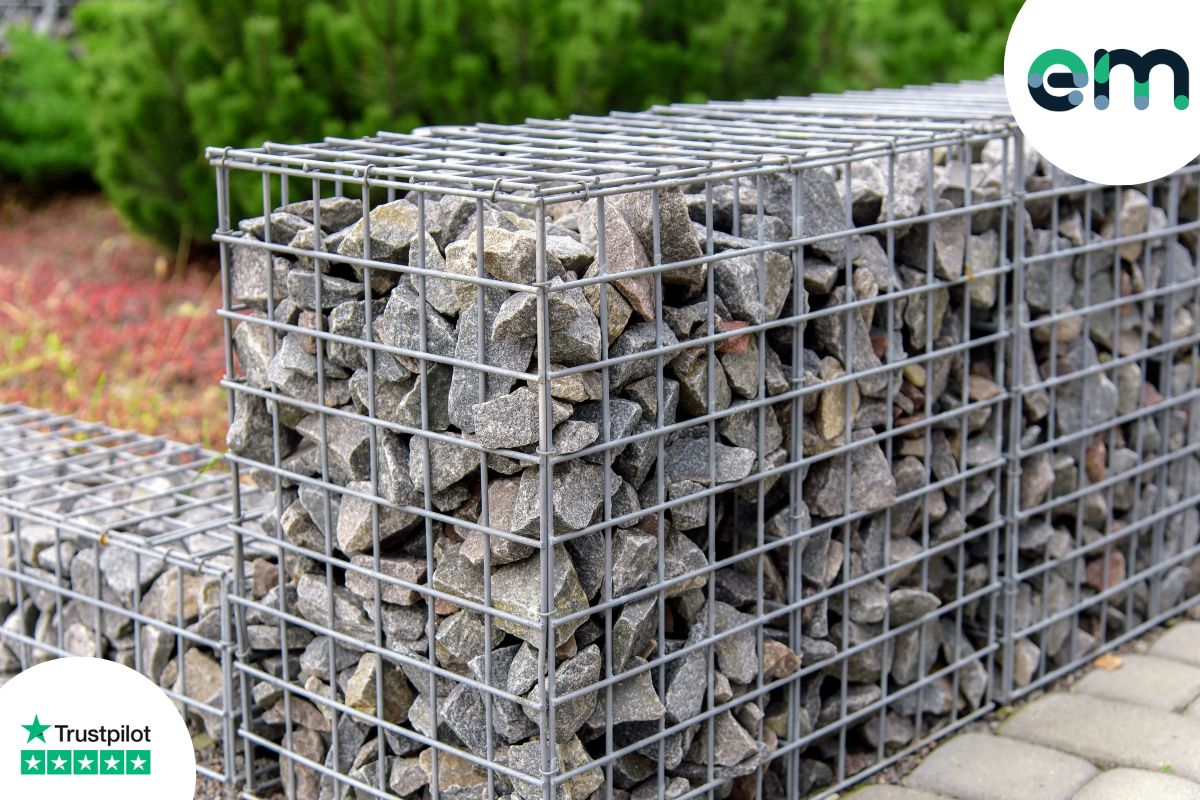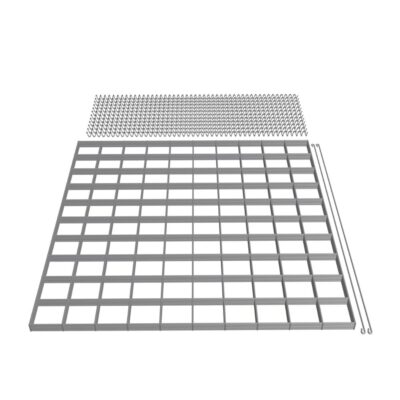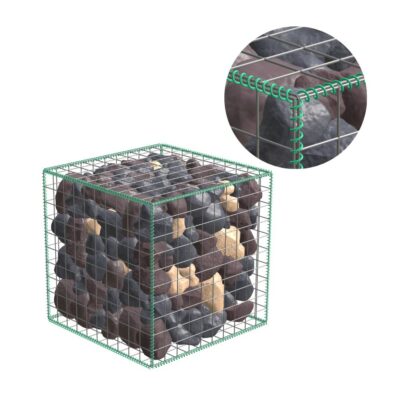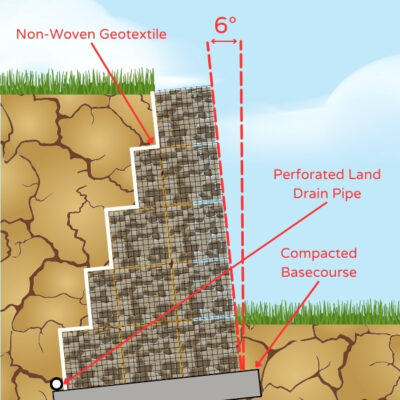No products in the basket.
Blog
What are Gabion Baskets?
Gabion baskets have become a popular choice for various landscaping and construction projects due to their versatility, durability, and aesthetic appeal. These baskets, often referred to as gabion walls or cages, are made from wire mesh panels that are assembled into boxes and then filled with stones.
Gabion baskets also serve as an effective solution for erosion control, retaining walls, garden features, and even architectural designs.
In this blog post, we’ll delve into the details of gabion baskets, covering topics such as installation, joining methods, bulge prevention, stone selection, and more.
Installing Gabion Baskets
Before diving into the installation process, it’s essential to prepare a suitable foundation. Gabion walls should only be installed on a solid base, free from organic material that could decay over time. Create a sub-base using Type 1 stone over a layer of non-woven geotextile membrane, this should then be compacted with a vibrating plate compactor, this ensures a stable footing for your gabion basket installation.
The depth of the sub-base varies based on the height of the wall; typically, a 100mm sub-base for a 1m high wall, while a 200mm sub-base is recommended for a 3m high wall. Adding a geotextile membrane layer between the gabion base and the sub-base can enhance stability.
Assembling and Joining Gabion Baskets
Gabion baskets are supplied in flat-packed kits, these kits come with 12 helicoil wires which can be wound down the corners of baskets by simply twisting them into place, and securing two of the panels together. When constructing a basket, bend the top end of the helicoil back at a 90-degree angle using pliers to prevent unwinding once they are screwed into place.
Stainless steel gabion clips can be bought separately and these can also be used to secure panels together or join two gabion baskets.
Although not standard for every basket, lacing wire can be used to join adjacent baskets as well as being used for extra support between panels either in the corners or from one side to another bracing, this helps prevent bulging when filling the gabion baskets with stone.
Preventing Bulging
One of the challenges when filling gabion baskets is preventing bulging of the faces due to the weight of the stones pushing up against the panels of the baskets. To counter this, bracing techniques are crucial. Internal windlass bracing ties, created using 2.2mm Galfan lacing wire or wire bracing hooks provide stability and help prevent bulging. our larger sized Gabions come with bracing hooks included.
When machine filling the gabion baskets it is usually best practice to use a metal bar across the front of the baskets to temporarily brace the panels. This will help prevent damaging or bending and distorting the shape of the basket.
Selecting and Filling with Stones
The choice of stone fill greatly impacts the stability and appearance of the gabion wall. Angular stones, usually 100-200mm in size, are recommended for effective compaction and stability. Avoid rounded stones, which are more suitable for decorative purposes. Properly graded and well-arranged stone fill helps prevent voids and ensures a strong structure.
Filling gabion baskets can be done manually by hand or with a machine. If the back of the wall is not going to be visible then it may be less time consuming and more cost effective to first fill the back portion of the basket with rubble and then use the more desirable looking stone to achieve a neat front face. During the filling process, internal windlass bracing ties can be used to help prevent bulging, these are tied from face to face, or in the corners, every 3rd of the way up the basket.
Building a Retaining Wall and Sizing
Gabion baskets are an excellent choice for building retaining walls due to their strong design and visual appeal. The design of a gabion retaining wall depends on its height, for example; a 1m high wall can be created using 1m x 1m x 1m or 2m x 1m x 1m baskets, but for every 1m increase in wall height, the bottom row of baskets should increase in depth by half a metre. This helps maintain stability and balance the forces exerted on the wall.
Additionally, retaining walls should be angled backward by 6 degrees to lessen the forces being applied to the structure. Although maintaining a straight faced wall can look very appealing sometimes for larger sized walls it is necessary to step the baskets backwards, this will further equalise pressure between the wall’s heel and toe. For those planning to construct large gabion walls with stepped slopes or structures behind, it’s important to recognise that the straightforward 2:1 stability ratio may not suffice. When dealing with more complex scenarios like these, seeking input from qualified engineers is a must.
A layer of geotextile membrane is recommended for the back side of the retaining wall to stop the stone filled gabions becoming clogged with dirt and silt and allowing rainwater to drain naturally through the wall. It is often recommended to have a length of perforated land drainage wrapped in non woven geotextile, run behind the bottom layer of baskets allowing excess rain water to drain safely away from the structure.
Conclusion
Gabion baskets offer an innovative solution for various construction and landscaping needs. Their sturdy structure, ease of assembly, and versatility make them an attractive option for projects ranging from erosion control to architectural designs. By understanding the installation process, joining methods, stone selection, and bracing techniques, you can create a durable and visually stunning gabion wall that stands the test of time.
Whether you’re looking to stabilise slopes, build retaining walls, or enhance the looks of your outdoor space, gabion baskets provide a reliable and environmentally friendly solution.



